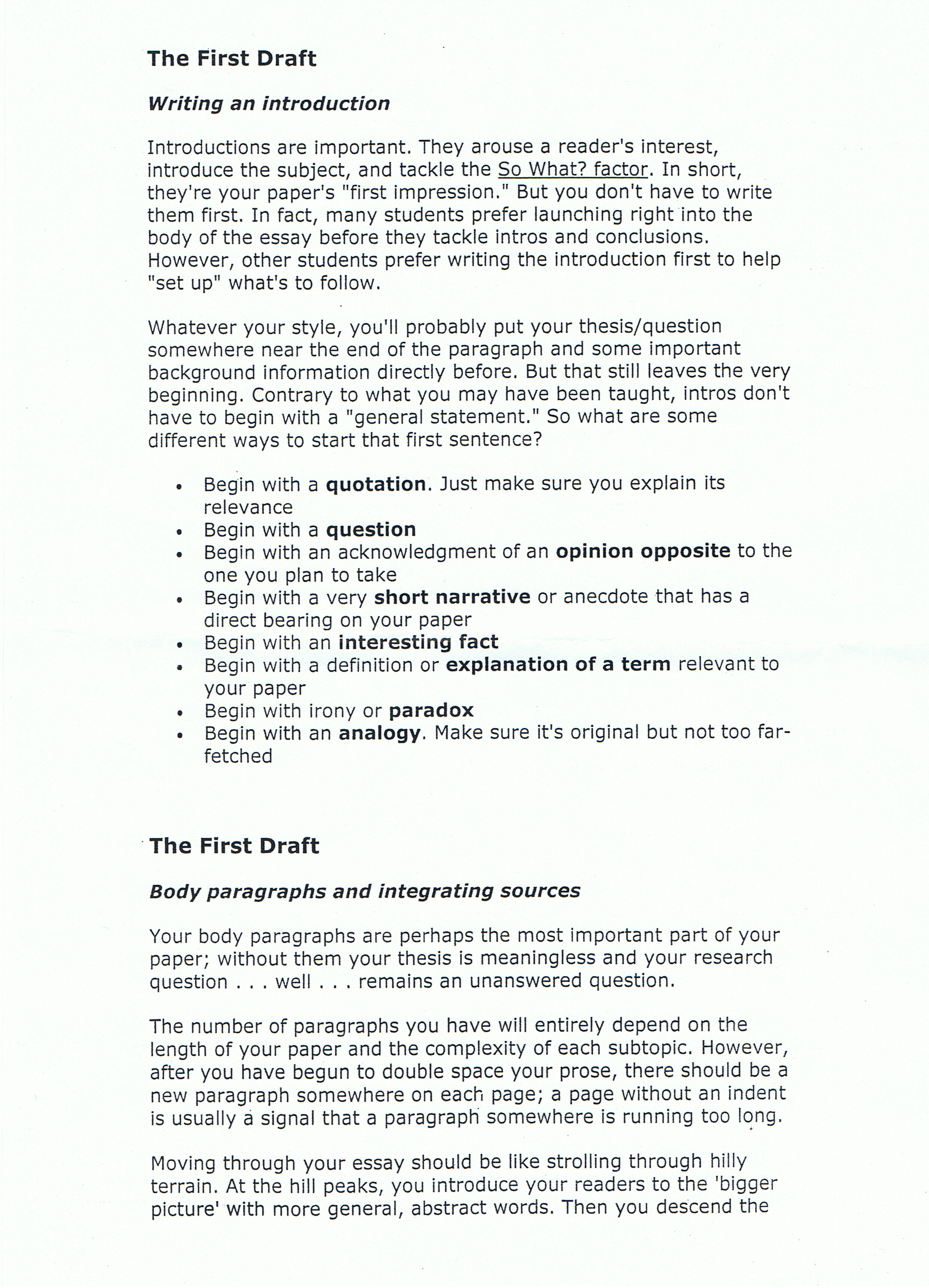CCF20110413�001

The First Draft
Writing an introduction
Introductions are important. They arouse a reader's interest, introduce the subject, and tackle the So What? factor. In short, they're your paper's "first impression." But you don't have to write them first. In fact, many students prefer launching right into the body of the essay before they tackle intros and conclusions. However, other students prefer writing the introduction first to help "set up" what's to follow.
Whatever your style, you'll probably put your thesis/question somewhere near the end of the paragraph and some important background information directly before. But that still leaves the very beginning. Contrary to what you may have been taught, intros don’t have to begin with a "generał statement." So what are some different ways to start that first sentence?
. Begin with a quotation. Just make surę you explain its relevance
• Begin with a question
• Begin with an acknowledgment of an opinion opposite to the one you plan to take
• Begin with a very short narrative or anecdote that has a direct bearing on your paper
• Begin with an interesting fact
• Begin with a definition or explanation of a term relevant to your paper
• Begin with irony or paradox
• Begin with an analogy. Make surę it's original but not too far-fetched
The First Draft
Body paragraphs and integrating sources
Your body paragraphs are perhaps the most important part of your paper; without them your thesis is meaningless and your research question . . . well . . . remains an unanswered question.
The number of paragraphs you have will entirely depend on the length of your paper and the complexity of each subtopic. However, after you have begun to double space your prose, there should be a new paragraph somewhere on each page; a page without an indent is usually a signal that a paragraph somewhere is running too long.
Moving through your essay should be like strolling through hilly terrain. At the hill peaks, you introduce your readers to the 'bigger picture' with morę generał, abstract words. Then you descend the
Wyszukiwarka
Podobne podstrony:
Davies0001 The First Draft Writing an introduction Introductions are important. They arouse a reader
MA 7550 HUNT, Hugh: The Live Theatre. An introduction to the history and practice of the stage. Lond
00463 bcaec2dfad584cf6031b64ffdea014 468 Russell The second segment is of shorter duration than th
66284 smpb 34 Health is the first Secret oj success how to rclax, they TH INK thcy know seores of ot
The goals of Design Survey are to (1) provide an introductory knowledge of design in order to assist
Blenkinsopp, J., The Pentatech. An Introduction to the First Five Books of the Bibie, New York 1992
davies0006 The First Draft Writing a conclusion Just as there is no formula for an introductionr the
conclusion The First Draft Writing a conclusion Just as there is no formula for an introduction, the
If you wish to combine an introductory level module, with a morę advanced module (i.e. over two seme
148 Arquivos de Zoologia Introduction The Cerithioidea is an enigmatic group abundant in species, wi
tfp everchronNext level litigation® Introducing the first collaborative case management platform for
SCAN0087 (2) 262 Introduction to the Pronunciation of English Unaccented Accented are /a/ +
Step One STEP ONEClearly Define Your Expectations When you are ready to hire an virtual assistant th
^ Early History of the Alphabet - An Introduction to West Semitic Epigraphy and Palaeography Handboo
więcej podobnych podstron